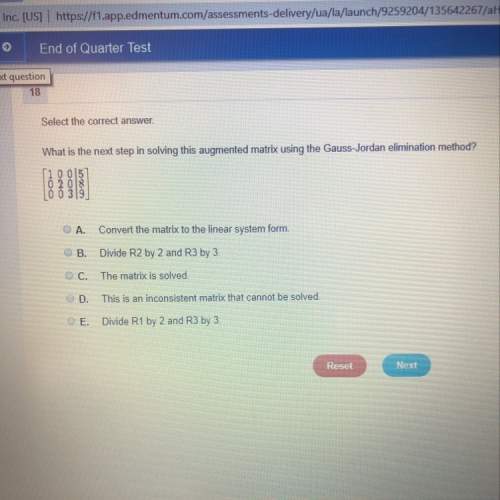
Mathematics, 11.11.2019 21:31 tatyanaknight122
The exponential is the analog of the geometric in continuous time. this problem explores the connection between exponential and geometric in more detail, asking what happens to a geometric in a limit where the bernoulli trials are performed faster and faster but with smaller and smaller success probabilities. suppose that bernoulli trials are being performed in continuous time; rather than only thinking about first trial, second trial, etc., imagine that the trials take place at points on a timeline. assume that the trials are at regularly spaced times 0,δt,2δ where δt is a small positive number. let the probability of success of each trial be λδt, where λ is a positive constant. let g be the number of failures before the first success (in discrete time), and t be the time of the first success (in continuous ) find a simple equation relating g to t. hint: draw a timeline and try out a simple example.(b) find the cdf of t. hint: first find p(t> ) show that as δt→0, the cdf of t converges to the expo(λ) cdf, evaluating all the cdfs at a fixed t≥0.

Answers: 1
Another question on Mathematics

Mathematics, 21.06.2019 13:50
2-3 6. use your equation to find how high tyler will have to climb to scale the peak. (4 points: 2 points for correctly substituting values, 2 points for the correct height)
Answers: 3

Mathematics, 21.06.2019 15:20
Asmall (but heavy) particle placed in a glass of water will follow a zigzag motion because the particle will bounce off of the water molecules it meets. this is called brownian motion. a physicist simulates this on a computer, by varying the distance a particle can travel (called the mean free length), on average, before it collides with a water molecule and assigning the change in motion to be one of 8 directions, each with a similar probability. by running the simulated particle (with the same mean free length) many times she determines that it should take 15 seconds, on average, for the particle to fall to the bottom, with a standard deviation of 1.5 seconds. next she lets a real particle fall through a glass of water and finds that it took 18 seconds. what does she conclude, and why?
Answers: 1

Mathematics, 21.06.2019 17:30
Choose the number sentence that shows the identity property of addition. a. 122 = 61 + 61 b. 62 = 1 + 61 c. 61 = 0 + 61
Answers: 1

Mathematics, 21.06.2019 18:00
Need on this geometry question. explain how you did it.
Answers: 1
You know the right answer?
The exponential is the analog of the geometric in continuous time. this problem explores the connect...
Questions

Mathematics, 05.04.2021 21:40

History, 05.04.2021 21:40




Mathematics, 05.04.2021 21:40

Mathematics, 05.04.2021 21:40





Computers and Technology, 05.04.2021 21:40

Mathematics, 05.04.2021 21:40




Health, 05.04.2021 21:40

Computers and Technology, 05.04.2021 21:40

SAT, 05.04.2021 21:40

Mathematics, 05.04.2021 21:40




